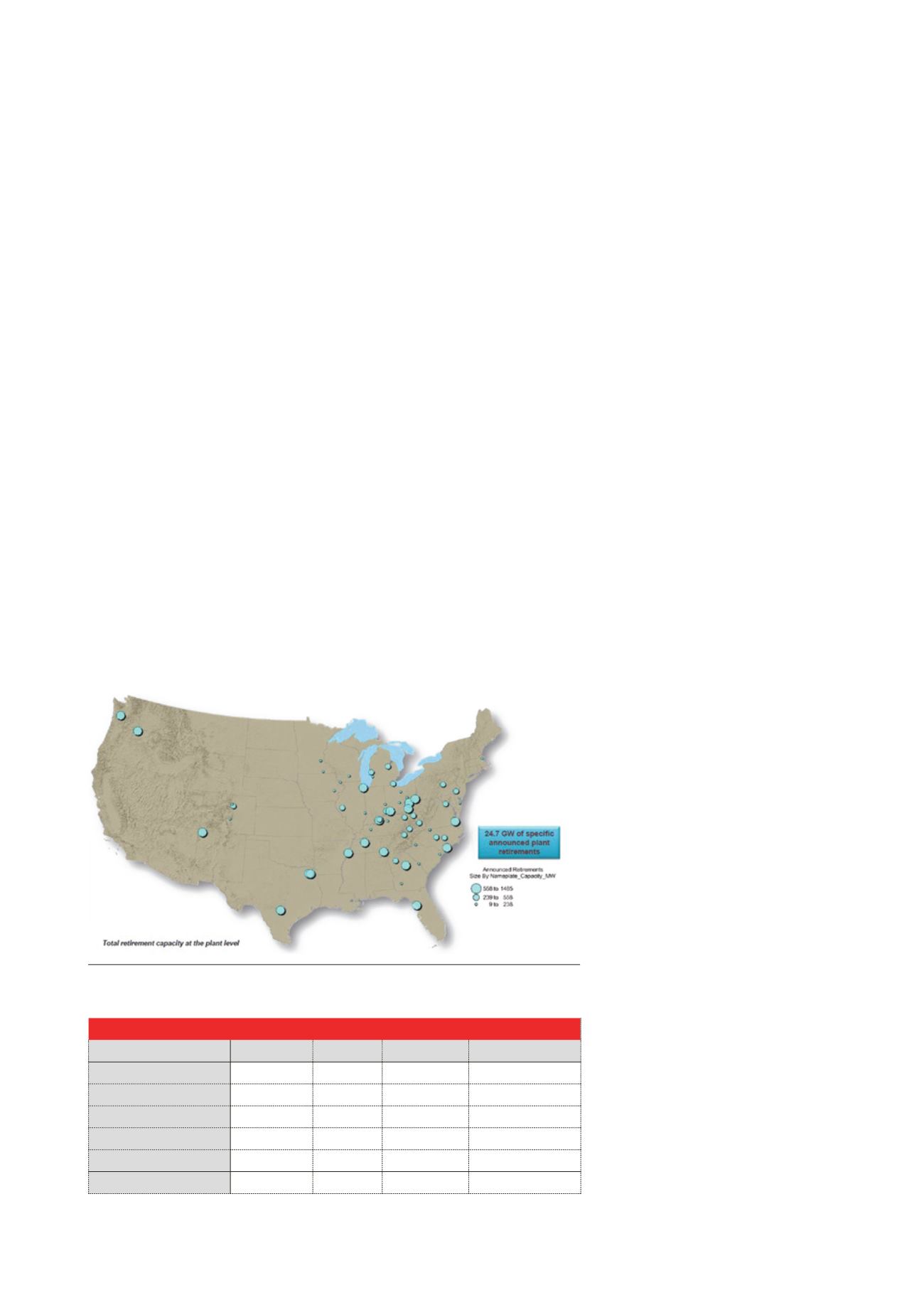
most of the large coal-producing
counties are reporting unemployment
rates of greater than 11%, with
Mingo County and McDowell County
reporting the highest rates of 13.3% and
15.3% respectively.
Causes for the recent
downturn
The decline of the state’s coal industry
can be attributed to one primary factor:
the federal regulatory assault known as
the Obama War on Coal. The direct
impact of this regulatory assault has
come with the shuttering of hundreds of
coal-fired power plants across the
country, with many of the closures
coming in areas traditionally served by
West Virginia coal (Figure 1). Each of the
dots on the map indicates power plants
closed or to be closed as a result of the
administration’s regulatory assault on
coal. (Note: The larger the circle, the
more kWh of electricity production is
being retired).
Historically, approximately 60% of
West Virginia’s coal production has been
thermal coal for use in electric
production. The other 40% has been
higher quality metallurgical coal used in
the making of steel. Given that the
majority of coal-fired power plant
closures are in historic markets for
West Virginia’s coal, the impact on coal
production in the state is magnified.
It is important to note that
West Virginia’s metallurgical coal is the
best quality in the world and there is no
real replacement for coal in the
steelmaking process, so that portion of
the state’s coal market is secure except
for the normal cyclical economic factors
that are being experienced today with
the ongoing sluggishness of the world
economy.
While the impact of regulations being
imposed by the Obama Administration
are the primary cause of the decline in
West Virginia coal production, there are
several other factors that are
exacerbating the current downturn.
These factors include:
n
n
An increasingly difficult and
expensive-to-mine reserve base.
n
n
Competition from artificially
low‑priced natural gas.
n
n
Aworldwide decline in demand for
metallurgical coal as a result of a
faltering world economy.
n
n
Recent declines in exports of
thermal coal.
n
n
Competition from other coal
producing regions.
Increasingly
difficult‑to‑mine and
expensive reserve base
Coal has been mined in West Virginia
since before the Civil War and mined on
an industrial scale since just before the
turn of the 20
th
Century. During the past
130 yr, about 2.2 billion t have been
produced in West Virginia’s coal mines.
The state has about 51 billion t of proven
recoverable reserves remaining;
however, much of the low-cost, larger
seam coal has been mined.
This does not mean that, as is often
reported or implied in the media,
West Virginia’s reserve base is ‘rapidly
declining’. What it does mean is that to
remain competitive, the industry will
have to find ways to lower the cost of
mining through innovations in
technology, improved productivity and
reductions in expenses.
To use an analogy, 20 yr ago most
experts considered most of the eastern
gas fields to be depleted. With the
advent of horizontal drilling, deep-well
drilling and fracking, those same fields
are now among the nation’s most
productive.
Competition from
natural gas
West Virginia’s coal industry does face
major competition from the increased
availability of low-priced natural gas.
However, contrary to the popular
perception, natural gas is not cheaper
than coal, even at today’s unsustainably
low prices. In fact, the primary factor
driving the switch by utilities to natural
gas is not price but is rather the need to
find an alternative fuel for baseload
generators in light of the regulatory
burden placed on domestic coal.
Table 1 shows the current
comparative prices of the major coal
markets compared with natural gas and
each other. The prices reflected are for
the week of 7 May 2015.
The table shows that natural gas
prices, as determined by the spot market
price on the Henry Hub, versus the
Figure 1. Announced coal-fired retirements (2012 – 2020).
Source: National Energy Technology Laboratory.
Table 1. Coal characteristics by coal-producing region
Region
Average Btu SO
2
Price
Price/ million Btu
Central Appalachia
12 500
1.2
US$52.85
US$2.11
Northern Appalachia
13 00
3
US$60.90
US$2.34
Illinois Basin
11 800
5
US$40.45
US$1.71
Powder River Basin
8800
0.8
US$11.55
US$0.66
Uinta Basin
11 700
0.8
US$39.30
US$1.68
Natural Gas (Henry Hub)
n/a
0.01
n/a
US$2.72
14
|
World Coal
|
July 2015


